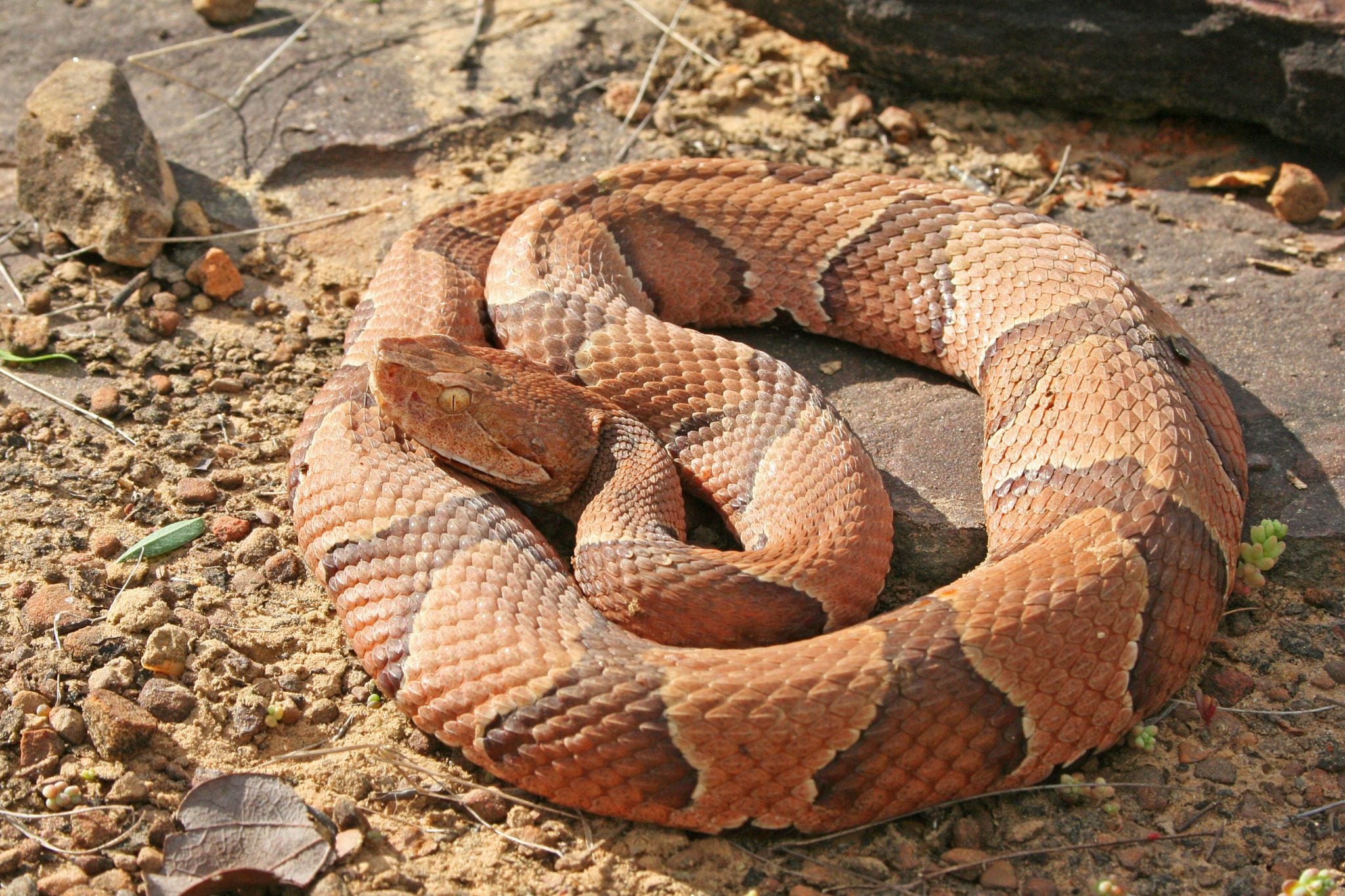Snakes in Alabama: What You Need to Know
Published 12:48 pm Monday, September 18, 2023

- Copperheads are the most common venomous snake throughout Alabama.
|
Getting your Trinity Audio player ready...
|
Special to the Lowndes Signal
By Carnell McAlpine, Jr.
Tuskegee University Extension Program Agent
People cannot resist the call of the outdoors when the weather warms up. Wildlife will begin to move with warmer weather too. Snakes are one type of wildlife that makes many people anxious, but armed with some basic information and facts, people can reduce their stress about snakes.
More than 40 species live in Alabama. Only six of these are venomous. Whether citizens are hiking, camping or just venturing out into nature, it is important to learn the characteristics of venomous and nonvenomous snakes so you can distinguish them from one another.
There are six venomous snake species that are native to Alabama. Five of these species are in the pit viper group including the cottonmouth, copperhead, timber rattlesnake, Eastern diamondback rattlesnake, and the pygmy rattlesnake.
The sixth venomous snake, in a group by itself, is the coral snake. The pit viper group gets its name from the heat-sensing pit organ located between the eye and nostril. These pits can sense differences in temperature which helps locate warm-blooded prey.
“The venomous pit vipers may be distinguished by the large triangular head, the heavy body relative to its length, the vertical pupils, and the single row of scales on the belly below the anal scales,” said Dr. Jim Armstrong, a forestry and wildlife specialist with the Alabama Cooperative Extension System.
Cottonmouth snakes, also known as water moccasins, typically live around water including rivers, lakes, streams, and swampland. Young cottonmouth snakes can be identified by the lighter background with dark-brown bands, and the adults generally appear darker brown to black. These large, heavy-bodied snakes can reach 30-48 inches in length. Because the appearance of these snakes is hard to detect in the forest or woods, it is believed that some snake bites occur from individuals not seeing the snake and accidentally stepping on it.
These medium-sized snakes are characterized by their copper-red heads and distinctive hourglass-shaped markings. Their size averages between two and three feet. These snakes vary in color patterns, but the typical color is dark brown bands on a lighter brown background. Copperheads are more defensive if encountered at night than during the day and will usually vibrate its tail rapidly and give off a strong, musky scent when disturbed.
The timber rattlesnake is a large, heavy-bodied snake that can be found in most of Alabama. They can grow up to more than seven feet in length. These snakes have black and yellow patterned bodies. Their coloration makes it hard to detect them in forested areas.
The Eastern diamondback rattlesnake is the largest venomous snake in North America. It can grow up to 8 feet in length. These heavy-bodied snakes generally live in drier areas such as pine flatwoods, coastal scrub habitats, and sandy woodlands. These snakes are characterized by the dark-brown diamond shaped patterns that run the length of their body.
The pygmy rattlesnake is a small snake that grows a maximum length of 30 inches. Unlike other rattlesnakes, the pygmy has a rattle that is so small it can be very difficult to detect unless you’re very close. The color pattern of this snake is light-gray with dark brown-to-orange spots along the body.
The coral snake is the only venomous snake in Alabama not a part of the pit viper group. These snakes have slender bodies and can grow a maximum size of 3 feet. The coral snake is brightly colored with alternating bands of red and black, separated by narrow bands of yellow. Remember “red, touch yellow, kill a fellow.”
There are two nonvenomous snake species that have similar color patterns, but in these species the yellow bands touch black and not red. In addition, coral snakes have a black snout or nose. These snakes are only rarely seen and generally live underground in loose soils.
A bite from a venomous snake is serious and can be deadly. It is best to avoid these snakes. Never try to handle these snakes.
Nonvenomous snake species in Alabama outnumber venomous species by more than 30. The most common is the gray rat snake. They are one of the longest snakes in North America, occasionally growing up to 8 feet in length. These snakes are dark-to-light gray with darker gray or brown blotches. Typically found in forest areas, they may be found in residential areas as well. Rat snakes are good climbers so they can be found lying on tree limbs and branches.
Nonvenomous snakes are generally characterized by round pupils, smaller heads, and the double row of scales on the underside of the tail. However, the coral snake also has a double row of scales and a round pupil, so understanding the markings on snakes is important as well.
“When going into areas that snakes are likely to be found, my advice is to use your eyes and look before putting your hands or feet in places where you can’t see them well,” Armstrong said.
Unlike other wildlife species in Alabama, the snake receives the most negative attention. Some people have the misconception that snakes are aggressive and chase people, but Armstrong said snakes are more likely to avoid people and try to escape. He added that snakes play vital roles in the environment and can be useful in controlling rodent populations.





